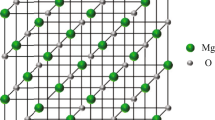Conclusions
The quantitative relation established by the author between a number of economic variables radically changes the tranditional conceptions of the varations in furnace-equipment productivity and net production costs at a fixed or variable furnace campaign life, and also the correlations between the actual increases in furnace, and labor productivity.
The methods developed under these circumstances for assessing the economy of different furnace operating procedures have substantiated the advantages of boosting furnace-equipment performances, in spite of a certain limited shortening of campaign life, against operating procedures at a lower specific output but with a longer campaign life.
The procedure for assessing the campaign life, which would ensure the achievement of a balance in the yearly furnace productivity at different levels of daily output, made it possible to establish that variations in the mean daily specific output of good glass has a many times greater effect on production economy than has the prolonging or shortening of the furnace campaign life.
At the same time, it is clearly essential to go on making every effort to extend the period between repairs, shorten repair times, and especially, improve the quality of refractory materials, In conjunction with the intensification of the processes.
It is essential to earmark as soon as possible those furnace installations which lend themselves to intensified glass melting processes, and to ascertain by experiments the optimal temperature maximum at the current refractory quality, and the economically and technically proved furnace campaign life under these circumstances.
After this, a schedule and the necessary measures should be worked out for converting other factories to the intensified operating procedures.
The mechanism of the industrial economics arising from intensifying the processes, as propounded by the author, are of methodological and practial value, not only to all types of glass manufacture, but also to a number of other branches of Industry. This is of significance to those in which, as in the glass industry, the problem arises of of choosing the most economical procedure, and where raising working rates and over-all productivity leads to more rapid wear in equipment and therefore the need for more frequent and lengthy major repairs.
Confirmation by experiments of the author's theoretically estimated efficacy of the intensification of glassmelting processes will enable significant changes to be made in the Seven-Year Plan for the expansion of the glass industry.
Similar content being viewed by others
Literature cited
I. I. Ben', “Intensifying glass-melting processes and production economics” Steklo i Keramika, 10 (1958).
Rights and permissions
About this article
Cite this article
Ben', I.I. The most economical method of operating glass furnaces. Glass Ceram 15, 659–667 (1958). https://doi.org/10.1007/BF00672912
Issue Date:
DOI: https://doi.org/10.1007/BF00672912




